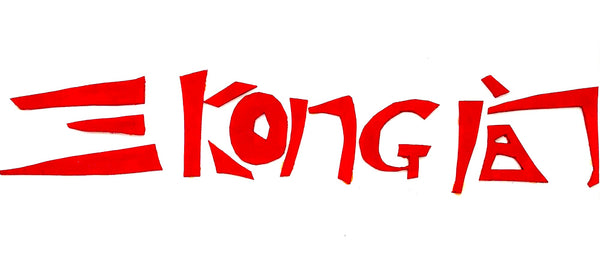From March to May 2024, Xu Bin spent some time in his hometown, a small village in southwestern China. His family's brick-and-wood house had fallen into disrepair, so Xu Bin hired workers to renovate it. After the renovation, there were many leftover materials such as replaced wood, beams, and tiles. Additionally, a local school had relocated, leaving behind some laboratory equipment including test tubes and beakers, which Xu Bin acquired from the teachers.
Utilizing these materials, Xu Bin created a series of sculptures. He placed them along the village roads, beside farmers' fields, and around his house. Initially, the villagers were very curious, gathering around the sculptures to look at and discuss what they might represent. Xu Bin explained to them that these were installation art pieces. After a few days, the villagers would pass by the sculptures without stopping to watch or discuss them.
One of Xu Bin's aims in placing these sculptures along the village roads, fields, and near his house was to integrate art into daily life and observe its impact on the villagers' everyday routines and perceptions. Through this approach, he sought to explore to what extent art could provoke thought and reaction among rural residents.
This art installation is made of discarded wood and glass. Xu Bin erected it on the road near the entrance of the village, facing a cornfield next to a forest. It is like a signpost.
This art installation is crafted from discarded bricks and glass beakers. Xu Bin bent wires into the shape of sprouting seeds, painted the topmost brick, and carved markings onto it. "This represents the vitality of sprouting seeds, with their roots leaving deep imprints on the earth," Xu Bin explained.
This installation art piece, crafted from wood, bricks, and glass stirring rods typically used in laboratories, presents a striking visual. Transparent glass rods are inserted into bricks, arranged closely together to form an organ-like structure. The wooden board at the back is deliberately cut at sharp angles. Xu Bin, fascinated by modern architectural design, expresses his aesthetic and mastery over various materials in this work. Placed against the rustic exterior of a farmhouse, the installation creates a compelling contrast between modern civilization and agricultural civilization.
This installation art piece evokes the essence of a cityscape. Xu Bin has meticulously hammered long nails into a wooden board, painting their heads in vibrant colors. Transparent glass test tubes of varying lengths are mounted onto the nails, each resembling an individual building. Through the strategic arrangement of these diverse structures, with careful attention to spacing and height, the piece beautifully mimics the dynamic and varied nature of urban life. The result is a captivating representation of the city we inhabit, blending artistic vision with architectural elements. Xu Bin placed this work on the ground floor where grains were dried at the entrance of the village.Next reading Art in the Fields: Xu Bin’s Creative Experiment - Part II









